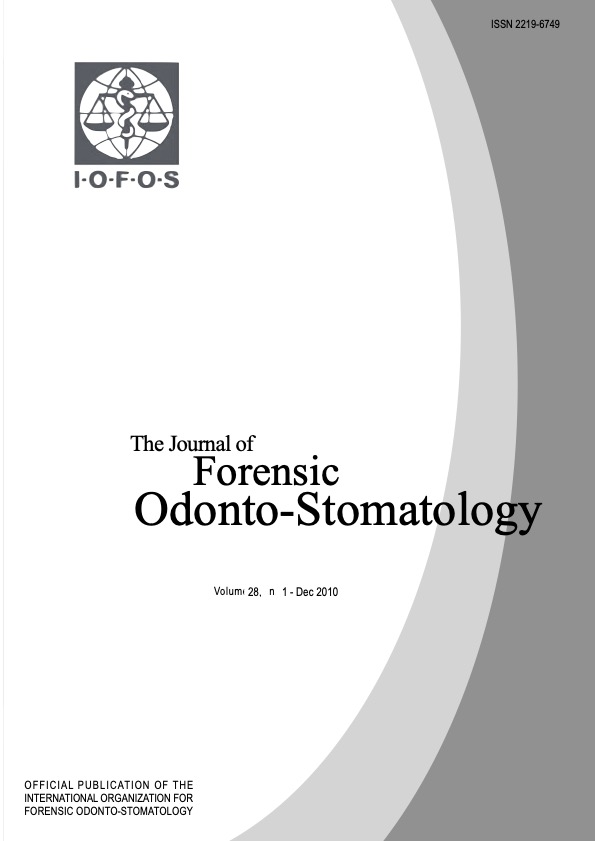Matching simulated antemortem and postmortem dental radiographs from human skulls by dental students and experts: testing skills for for pattern recognition
Abstract
The aim of this study was to evaluate the ability of undergraduate dental students to match simulated ante- and post-mortem radiographs in human skulls with “experts” as controls for the 1)number of post-mortem images needed for a match, 2)accuracy of the matches, and 3)time spent for a match. A film bitewing was recorded in each side of 51 dentate dry human skulls (a.m.-images) and digital images of the teeth were recorded using a sensor (p.m.-images). 102 correctly matching and 102 non-matching image pairs were constructed. Ten students and three experts scored the image pairs as: “certain match”, ”certain non-match”, or ”uncertain”. None of the experts but half of the students made false positive scores. Half of the students performed just as accurately as the experts. All students (except one who made 8 false positive results) asked for more p.m.-images than did the experts before deciding on a match, however, all students, but one, also spent less time per image pair than did the experts before deciding on a match (P<0.001).
This simulated test sample may identify dental students and dentists with abilities for pattern recognition and thus help in the decision on who might be included as part of a forensic dental team when extra help is needed.

